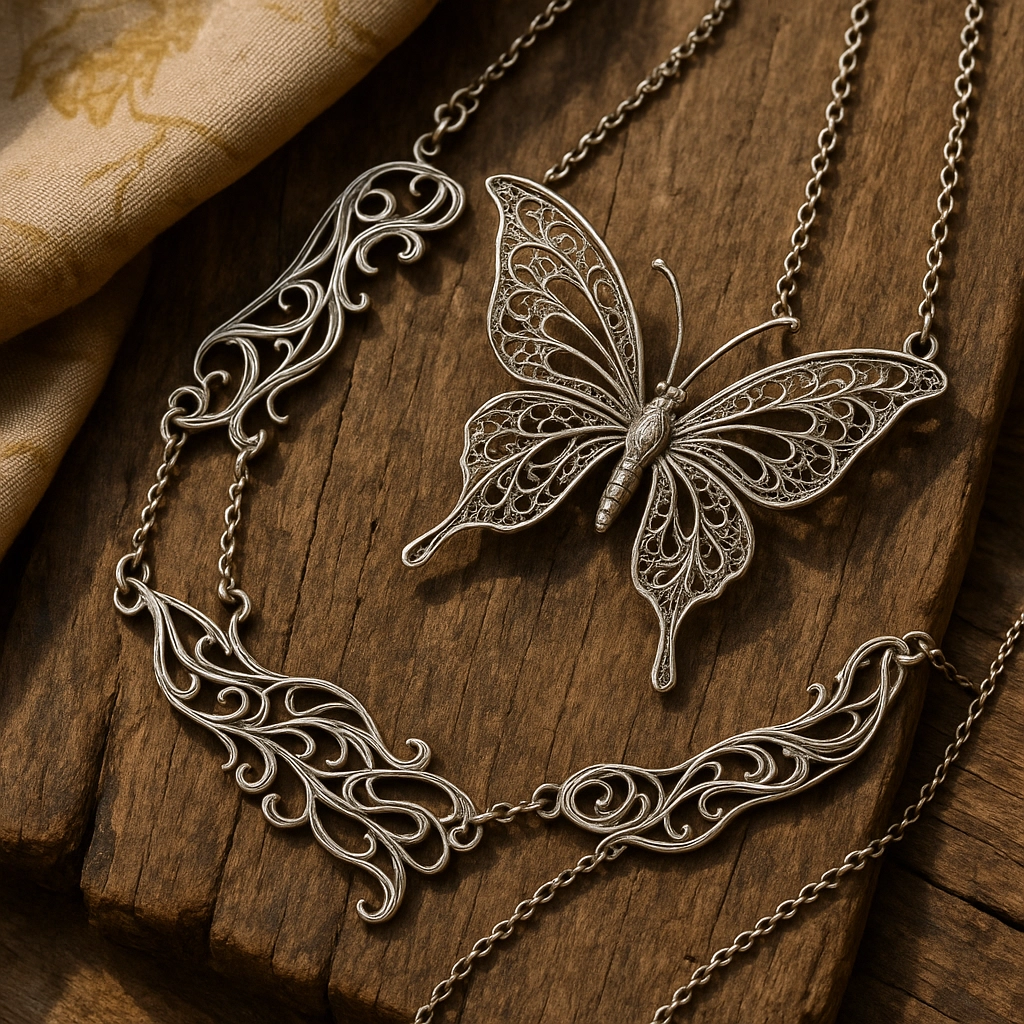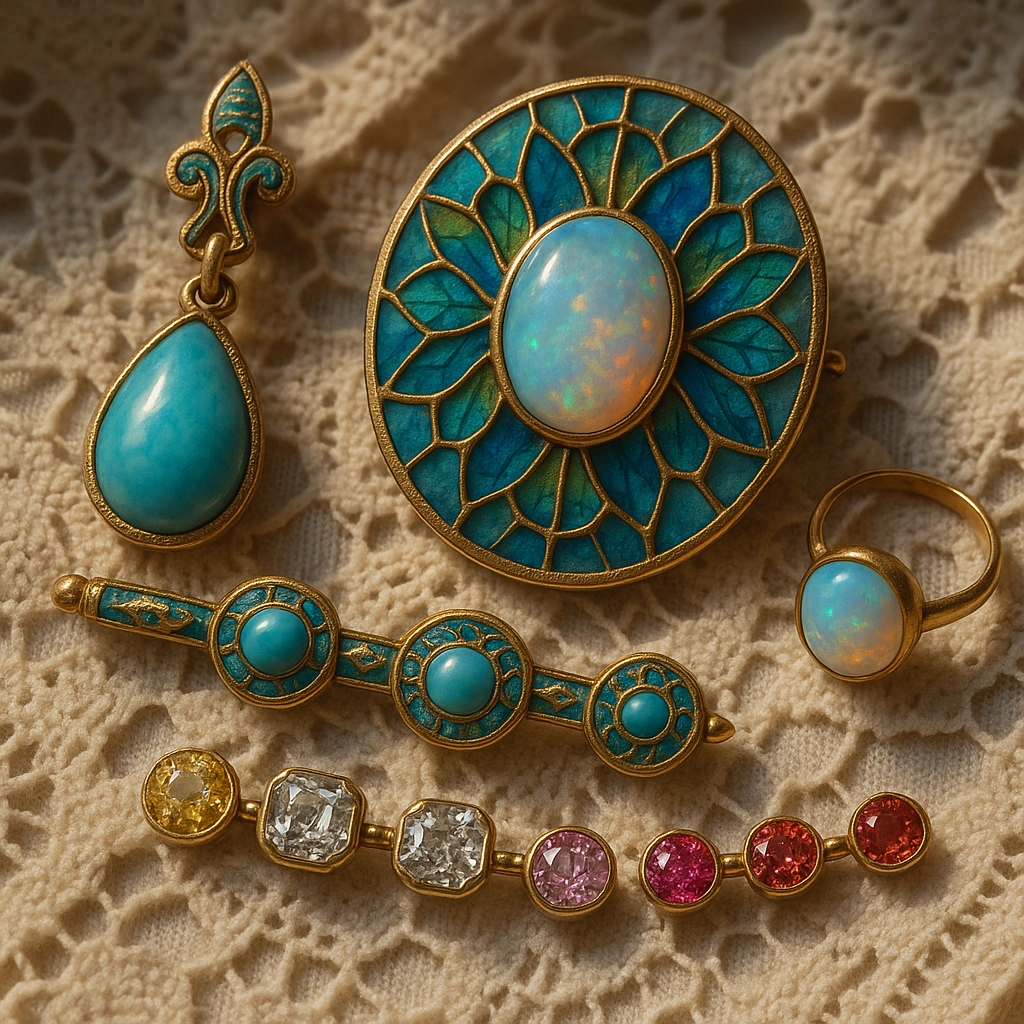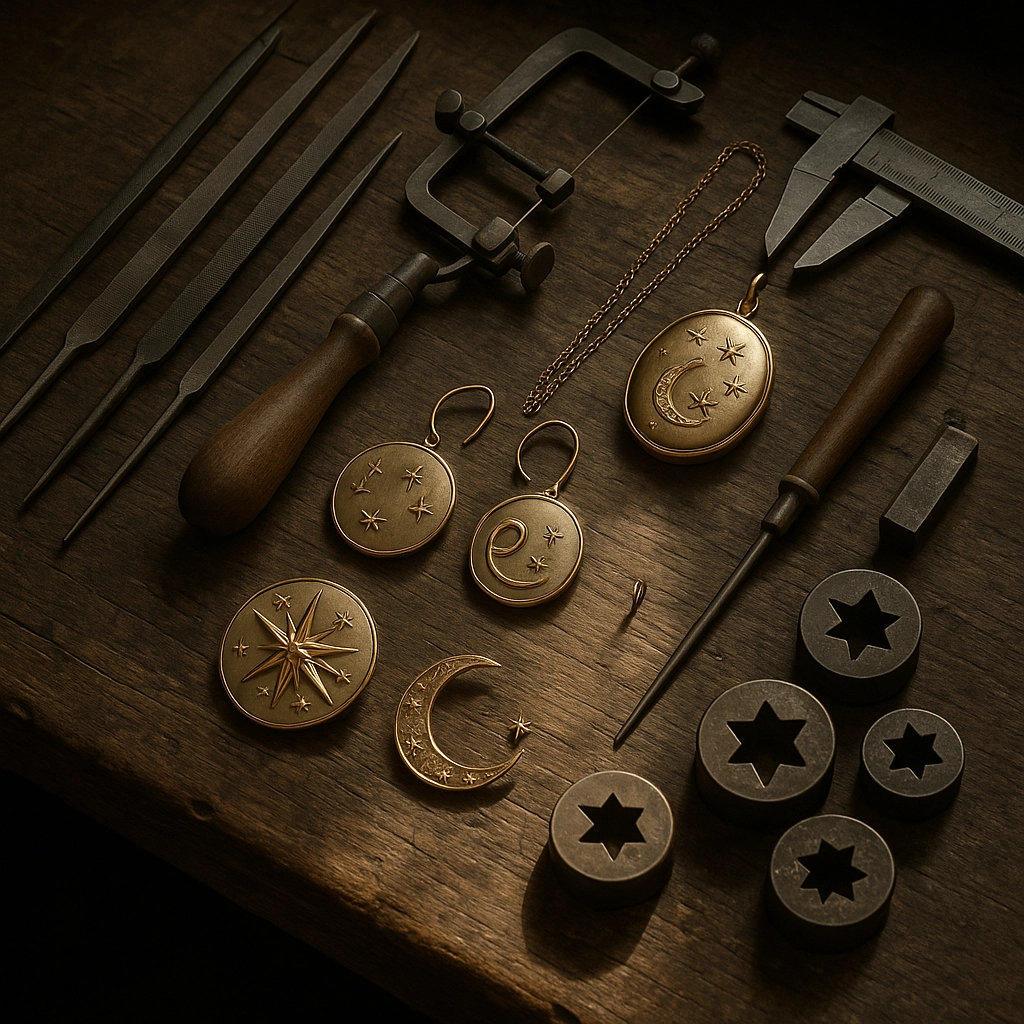Victorian Era Jewelry (1837–1901): Part 3 of 4
Welcome back to our Victorian journey! We've explored the romantic early years and the profound mourning period, and now I'm excited to share the Late Victorian era with you—what many call the Aesthetic Period (1885–1901). This is where Victorian jewelry gets really interesting, honestly.
Have you ever noticed how some antique pieces feel surprisingly modern? That's probably Late Victorian work you're looking at. This period marked a dramatic shift away from the heavy symbolism and somber themes we covered in Part 2, embracing instead a lighter, more artistic approach that would influence jewelry design for decades to come.
The Great Liberation: Moving Beyond Mourning
By the 1880s, something beautiful was happening in Victorian society—and it showed up immediately in jewelry design. The suffocating weight of perpetual mourning that had dominated the middle Victorian period was finally lifting. Queen Victoria herself began wearing colors again after decades in black, and the jewelry world exhaled with relief.
I find this transition fascinating because you can literally see the moment when designers started having fun again. Gone were the heavy, solemn memorial pieces. In their place came whimsical stars, delicate crescents, and nature motifs that celebrated life rather than mourning death.
Do you own any pieces with star or crescent moon motifs? There's a good chance they're channeling this Late Victorian aesthetic, whether they're antique or modern pieces inspired by the era.

The Japanese Influence Revolution
Here's something that might surprise you: Late Victorian jewelry owes a massive debt to Japanese art. When Japan opened its borders to the West in 1854, it created an artistic earthquake that rippled through every design discipline, jewelry included.
The Japanese aesthetic brought several revolutionary concepts to Victorian jewelry:
Asymmetrical Design: For the first time, Victorian jewelers started creating pieces that weren't perfectly balanced. A brooch might feature a butterfly landing on one side, or a branch extending further in one direction than the other.
Nature in Motion: Instead of the static, formal flower arrangements of earlier Victorian jewelry, Late Victorian pieces showed nature in movement—flowing water, wind-blown grasses, butterflies mid-flight.
Negative Space: Japanese art taught Victorian designers the power of what wasn't there. Suddenly, jewelry pieces were using empty space as part of the design, creating lighter, more ethereal effects.
I love examining Late Victorian pieces because you can spot these Japanese influences immediately once you know what to look for. The next time you're at a vintage jewelry shop or museum, look for pieces that feel like they're caught in a gentle breeze—that's the Japanese aesthetic at work.
Materials Revolution: Silver's Golden Age
While earlier Victorian periods were obsessed with gold, the Late Victorian era embraced silver with unprecedented enthusiasm. This wasn't just about cost—it was an artistic choice that reflected the period's lighter aesthetic.
Silver allowed for more delicate work than gold. Its malleability meant jewelers could create intricate filigree, gossamer-thin chains, and ethereal designs that seemed to float rather than weigh down the wearer. Are you wearing silver jewelry right now? If so, you're participating in a tradition that really came into its own during this period.

Enamel Work Reaches New Heights
The Late Victorian period also saw enamel work evolve into high art. Earlier Victorian enamel was often clunky and obvious—think of those heavy mourning lockets with stark black enamel. Late Victorian enamel was subtle, sophisticated, often featuring:
- Plique-à-jour enamel: A technique that created stained glass effects in jewelry
- Champlevé work: Where enamel was inlaid into carved metal channels
- Subtle color gradations: Moving away from solid blocks of color to gentle transitions
The enamel work from this period is so refined that it often looks like miniature paintings. I've seen Late Victorian enamel brooches that rival anything you'd find in an art gallery.
Gemstone Preferences: Color Makes a Comeback
After decades of somber garnets and jet, Late Victorian jewelry exploded with color. This period loved:
Opals: These mysterious, color-shifting gems perfectly captured the era's fascination with subtlety and artistic effect. Late Victorian opal jewelry often featured the stones in naturalistic settings that enhanced their otherworldly glow.
Turquoise: Fresh, optimistic, and perfect for the era's lighter aesthetic. Turquoise appeared in everything from delicate stick pins to elaborate parures.
Colored Diamonds: As diamond cutting techniques improved, colored diamonds became increasingly popular. Yellow, brown, and even rare pink diamonds started appearing in Late Victorian pieces.
Semi-precious stones in artistic combinations: Rather than focusing on a single precious stone, Late Victorian jewelers loved combining different colored gems to create painterly effects.

New Motifs: Stars, Crescents, and Natural Wonder
The symbolic vocabulary of Late Victorian jewelry was completely different from what came before. Instead of weeping willows and urns, we see:
Celestial Motifs: Stars and crescents dominated, often combined with flowing lines that suggested movement across the night sky. These weren't static symbols but dynamic, almost musical in their rhythm.
Insects and Small Creatures: Butterflies, dragonflies, and beetles appeared frequently, often with incredible attention to anatomical detail. These creatures symbolized transformation and natural beauty.
Art Nouveau Influences: Although Art Nouveau wouldn't fully flower until after Victoria's death, you can see its organic, flowing influences beginning to appear in Late Victorian pieces.
Do you have any pieces featuring these motifs in your collection? They're incredibly popular in modern jewelry too, showing how forward-thinking Late Victorian designers really were.
The Technical Revolution: New Tools, New Possibilities
Behind all these aesthetic changes was a technical revolution. The Late Victorian period saw:
Improved die-striking techniques: Allowing for more detailed and consistent production of decorative elements.
Better alloys: Silver alloys became more durable and workable, enabling finer detail work.
Precision tools: New files, saws, and measuring instruments allowed for unprecedented precision in jewelry making.
Photographic reference: For the first time, jewelers could use photography to study nature, leading to more accurate and detailed natural motifs.
These technical advances meant that the artistic vision of Late Victorian designers could finally be fully realized in metal and stone.
The Social Context: Women's Changing Roles
I can't talk about Late Victorian jewelry without mentioning the changing role of women during this period. As women gained more independence—entering universities, pursuing careers, advocating for suffrage—their jewelry reflected this new confidence.
Late Victorian pieces were designed for women who moved through the world differently than their mothers had. The lighter, more practical designs could transition from day to evening, from home to work, from private to public spaces.

Collecting and Recognizing Late Victorian Pieces Today
When I'm examining jewelry to determine if it's from the Late Victorian period, I look for several key indicators:
Weight: Late Victorian pieces feel lighter than their earlier counterparts, even when they're substantial in size.
Movement: These pieces often incorporate elements that move or seem to suggest movement—swaying elements, asymmetrical compositions, flowing lines.
Color palette: More diverse and subtle than earlier Victorian work, often featuring unusual color combinations.
Technical precision: The craftsmanship is incredibly fine, often featuring details that require magnification to fully appreciate.
Cultural motifs: Japanese-influenced designs, celestial themes, naturalistic but dynamic compositions.
If you're considering adding Late Victorian pieces to your collection, these are the qualities that will help you identify authentic examples from this remarkable period.
The Bridge to Modernity
What I find most fascinating about Late Victorian jewelry is how it serves as a bridge between the heavy symbolism of the earlier Victorian era and the artistic freedom that would characterize the 20th century. These pieces feel familiar to modern eyes while still carrying the craftsmanship and attention to detail that made Victorian jewelry legendary.
The Late Victorian period proved that jewelry could be both meaningful and light, both technically masterful and artistically free. It's no wonder that so many contemporary designers continue to draw inspiration from this remarkable time.
Tomorrow, we'll wrap up our Victorian journey with Part 4, exploring how this incredible era came to an end and transitioned into the Edwardian period. Until then, I'd love to hear about any Late Victorian pieces you've encountered—do you see those Japanese influences we discussed? Those delicate celestial motifs? The subtle enamel work that makes these pieces so special?
The Late Victorian period reminds us that even the most established traditions can evolve and surprise us. In jewelry, as in life, sometimes the most beautiful changes come when we're brave enough to let go of what came before and embrace something entirely new.
Cheers,
Peter